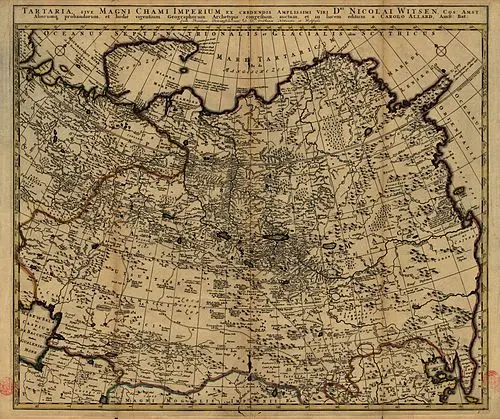 |
Introduction
Imagine a civilization that, according to some, rivaled the greatest powers in history—but was deliberately erased from official records. Tartaria, or the Tartar Empire, is one such enigma that challenges historians and captivates enthusiasts.
Was it a forgotten reality or just a product of conspiracy theories?
In this article, we will dive deep into Tartaria's origins, myths, and the fascinating architecture that still intrigues scholars today.
🌍 What Was Tartaria?
Tartaria, also known as Great Tartary, was a term used by Europeans from the Middle Ages up to the 20th century to refer to a vast region of Central and Northern Asia.
This territory stretched from the Caspian Sea and Ural Mountains to the Pacific Ocean, encompassing areas that today include Siberia, Turkestan, Mongolia, Manchuria, and sometimes Tibet (pt.wikipedia.org).
The people of these regions were generally referred to as "Tartars," a label encompassing various Turkic and Mongolic ethnic groups.
Over time, as the Russian Empire expanded eastward, the term "Tartary" was gradually replaced by more specific geographical designations.
🏛️ The Mysterious Architecture of Tartaria
One of the most intriguing features associated with Tartaria is its supposed advanced architecture.
Theorists point to buildings with majestic domes, intricate arches, and massive structures that seem to defy the technological capabilities of their supposed time.
Frequently cited examples include:
-
The 1889 Paris World’s Fair: Structures like the Palace of Machines are attributed to Tartarian engineering.
-
The 1893 Chicago World’s Fair: Monumental buildings allegedly representing remnants of Tartaria.
Historians and architects argue, however, that these are examples of the eclectic architectural styles of the 19th century—rich blends of cultural influences rather than evidence of a lost empire.
🧩 Conspiracy Theories: The Hidden Tartaria
The idea that Tartaria was a technologically advanced civilization deliberately erased from history has gained traction through conspiracy theories.
One of the most popular is the “mud flood” theory, which suggests that a global catastrophe buried entire cities under layers of mud, concealing evidence of Tartaria’s existence (discovermagazine.com).
Other theories claim that history was rewritten by elites to hide the true origins of certain technological and cultural advancements.
While these ideas are fascinating, they lack concrete evidence and are widely debunked by academic historians.





